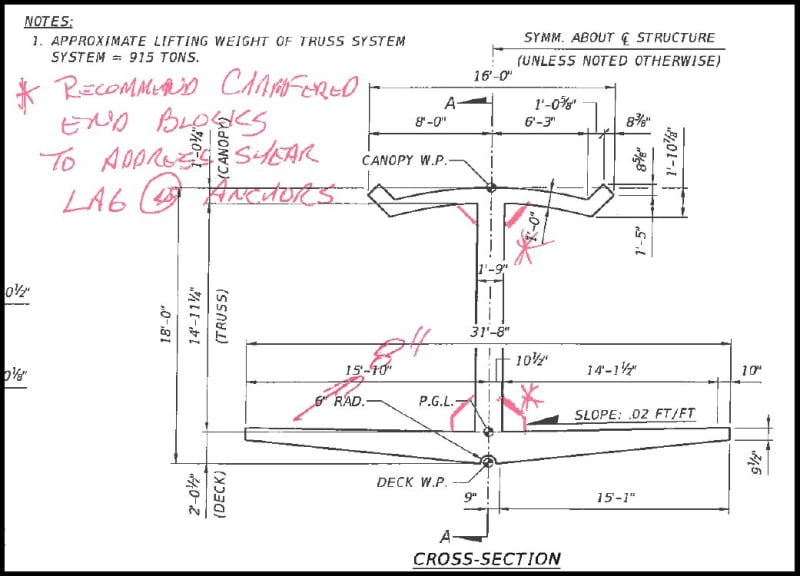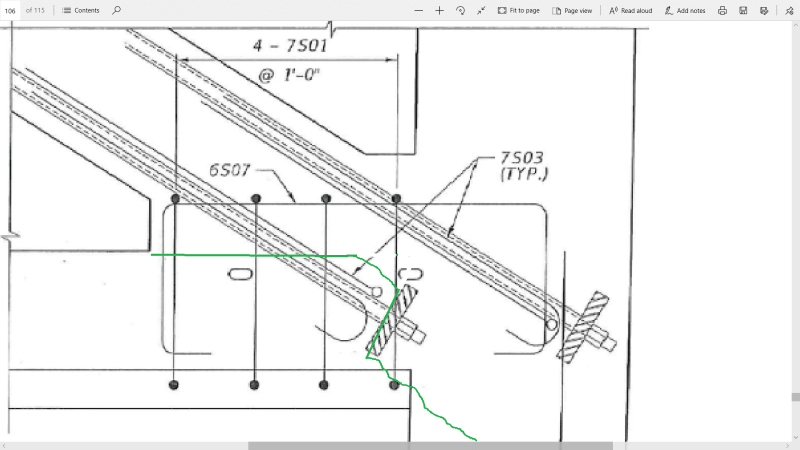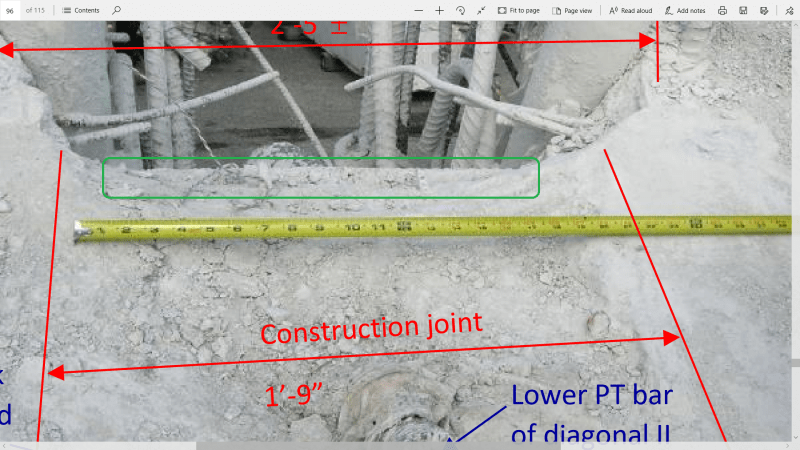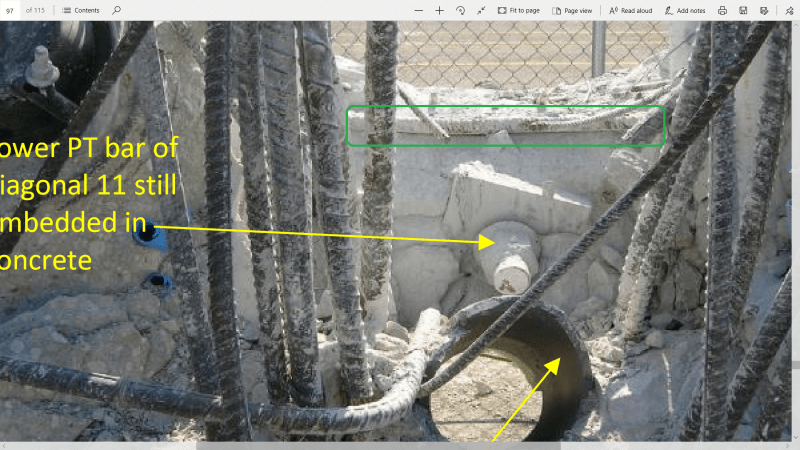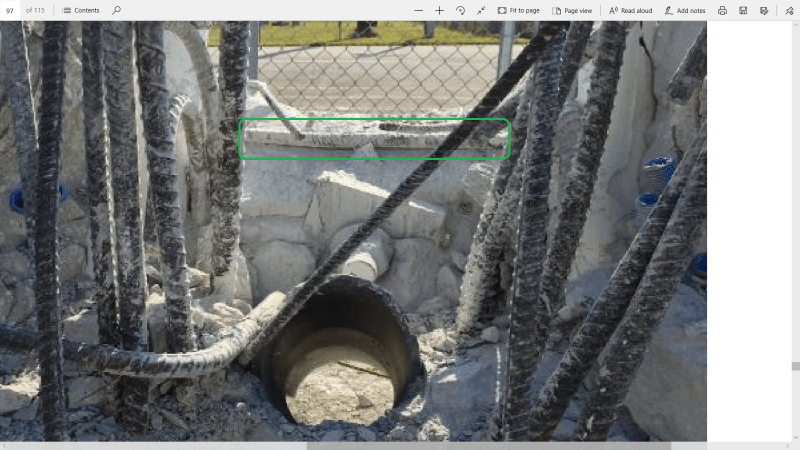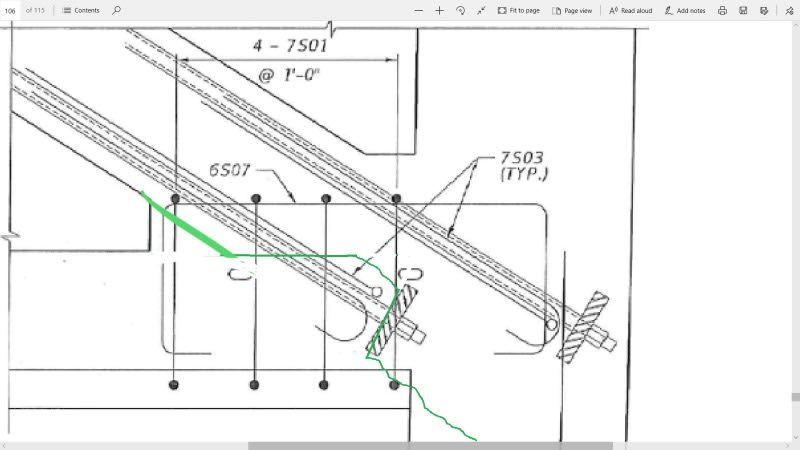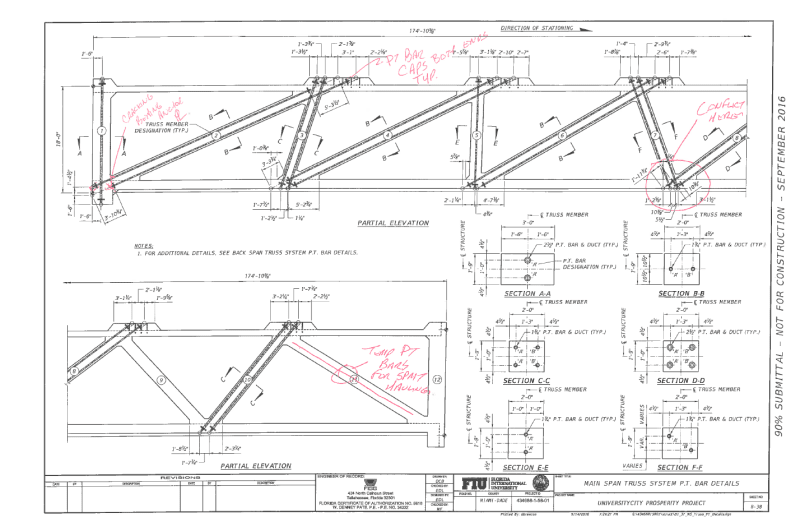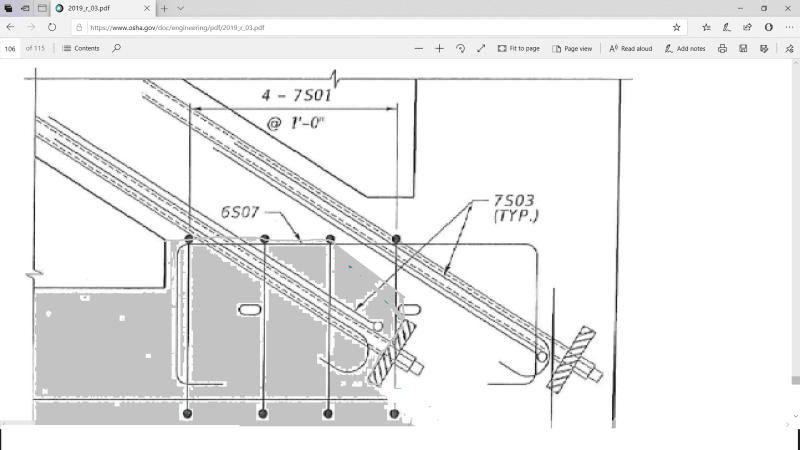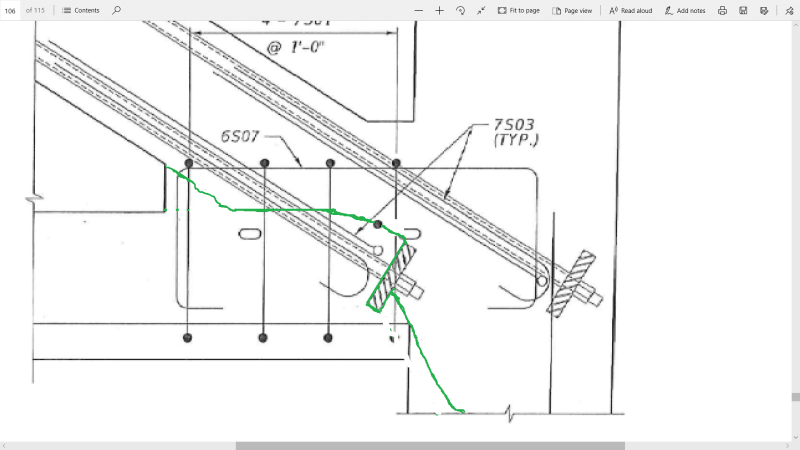I do not think Florida DOT were starry-eyed by FIGG or Denny Pate. They were simply overruled. This project was a Political Gravitas project, with every politician that could legitimately squeeze their name in, doing so. Senator Marco Rubio taught at FIU, Debbie Wasserman-Schultz was involved, along with Governor Rick Scott. FIU is a behemoth. FDOT's Tom Andres was very persistent with FIGG about his shear lag concerns at the 11/12 node.
Here is one of Tom Andres last mark ups suggesting extended chamfers around the base of the node. (Ignore the lack of a diaphragm in the drawing. The notes on the drawing were positioned between a congested drawing of the diaphragm & the one shown, which he marked up for convenience.)
I lived for 10 years, just 1 mile from Santa Clara University, the only supermarket at the time was right across the street from SCU. When SCU decided to expand, the El Camino Real (State Hwy 82) was rerouted at considerable expense. Powerful Alumni & Political connections mean prestigious universities usually get what they want, locally.
FIGG contracted with MCM for design and engineering for a lump sum of $905,000.00. Assuming their portion of the work was the $11.4 million of the total $14M contract, that works out to just under 8%, for Concept, Design & Engineering. The fee was most likely adjusted minimally for additional work with the relocation of the pylon. That doesn't seem to be a lot for what they were proposing. It suggests that FIGG was also in it for Prestige & Political Gravitas. It was they who introduced the ABC method.
Just scanning the MCM-FIGG contract, I didn't see where MCM obliged FIGG to perform a PEER Review as a component of their contract. Yet FIGG, who tried to persuade FDOT to allow another FIGG office to perform the PEER review, finally settle for a PEER review of 90% construction plans. If I recall, they paid Louis Berger about $30,000. FIGG may have been able to kick the PEER Review back to MCM. If they could have, then shame on them for not doing so. Unless, they knew the "Self Supporting" pitch was borderline and wanted to jeep it close to the vest. The MCM-FIGG contract starts on pdf page 326 of the FIU Contracts/MCM .zip file.
EDIT: Louis Berger contract was $61,000 & the MCM-FIGG contract can be found in the NBC FIU Bridge Timeline
EDIT: From BP&A Progress Meeting notes: Design contract was 9.9%

